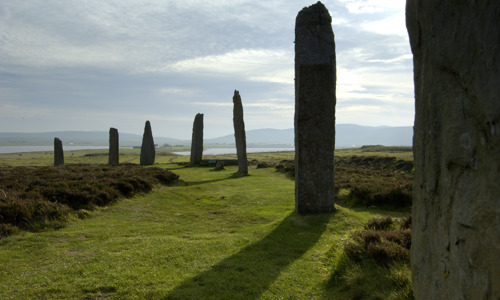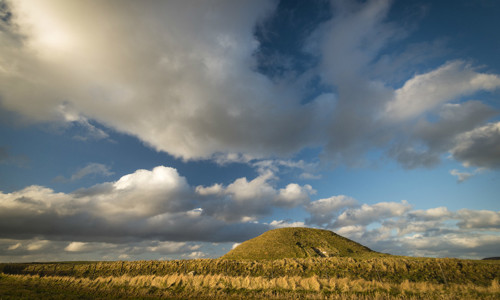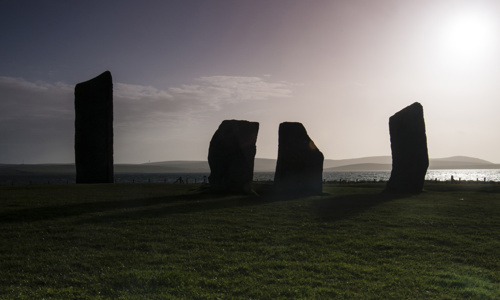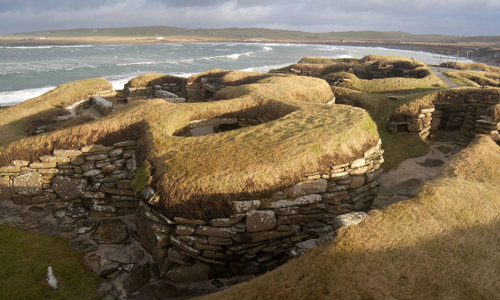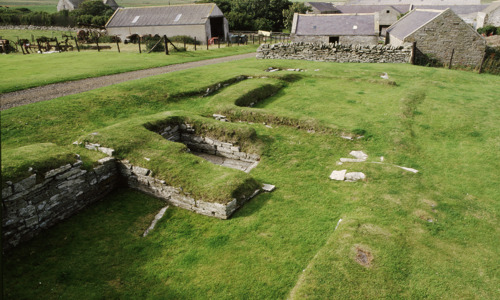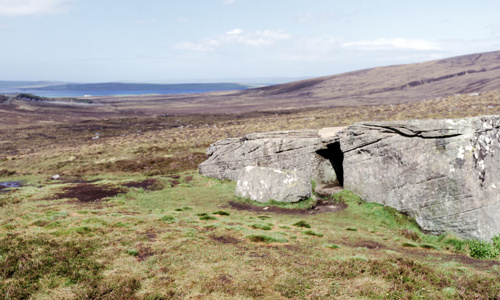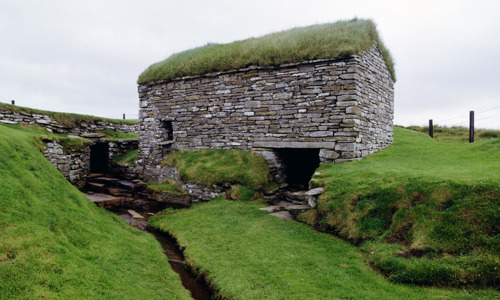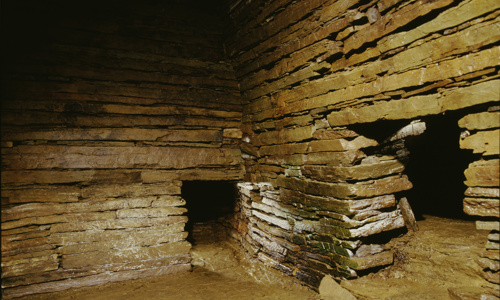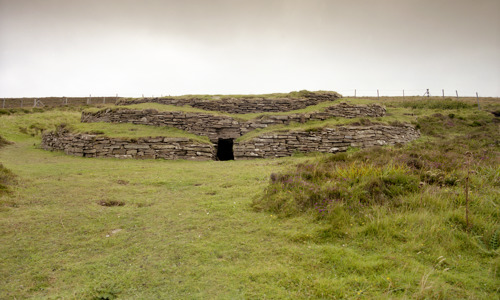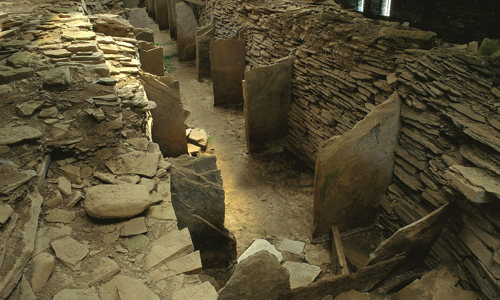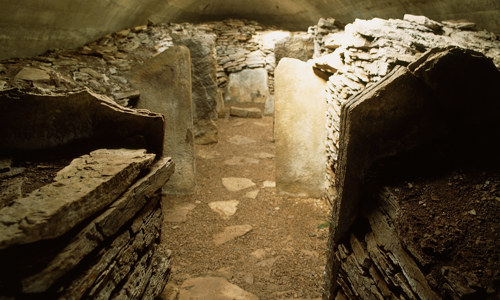History
Unstan is one of an abundance of burial monuments in Orkney, dating from about 5,000 years ago.
Two main kinds of Neolithic burial monument are found in Orkney:
- stalled cairns, where rectangular chambers are divided into stalls by upright stone slabs
- ‘Maeshowe type’ tombs, where a high central chamber has small cells opening off it
Unstan displays characteristics of both tomb types. Its rectangular central chamber is entered from the east via a narrow passage, and is divided into five stalls by upright stone slabs. But unlike most stalled cairns, a small cell leads off from the central stall.
Bones and burials
When the tomb was excavated, human bones were found piled in all five stalls, with two crouched skeletons found in the side cell.
It’s likely the two crouched skeletons represent the last burials here. They were perhaps intended to be moved into the stalls with the other bones at a later date. Communal burials, with groupings of certain bones in certain parts of the tomb, were typical in the Neolithic period.
Unstan Ware
Excavations from the 1800s also found leaf-shaped arrowheads and a fine flint tool. But most remarkable was the collection of pottery bowls: fragments of over 20 individual bowls were found.
All of these bowls feature a similar and distinctive design. Vessels of the same type were subsequently found in many other Orcadian tombs and the pottery is now called Unstan Ware after this site.
We can only guess their use in such tombs, but some may have contained food or drink, or served as provisions for the afterlife. Or perhaps they were offerings to spirits, or tributes to the ancestors?


